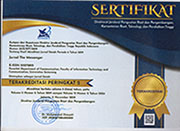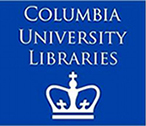Role of Social Media in Leveraging Urban Community Empowerment
Abstract
Introduction: This study tries to explores the significant roles of Twitter in creating leverage community participation as part of community empowerment in urban context. Twitter’s characters encourage people to informalize current issue in easy digestive forms. This study argues that Twitter practice will improve urban community for better life in every aspects. Also this study focusing on how urban community utilize Twitter to participate in city issues.
Methods: This research used several data collection and processing including online data mining through Netlytic, online observation and semi structured interview within time period from 2021–2022.
Findings: The research’s finding portrayed results in three achievements. First, Twitter significantly created leverage empowerment in a form of community participation to improve the city quality of life. Second, community empowerment was gained through holistic process and come. Third, using Twitter as appropriated and integrated strategy is a design of community empowerment. Twitter, in particular #laporhendi can be alternatives space for community discussion and participation amongst residents and local government and lead to community empowerment. Practically, urban community has the same opportunity to access Twitter and creates dynamically interaction and communication in Twitter in many direction, one to one ways, or two ways.
Originality: Although research about social media and community empowerment has been studied for decades, many research tends to explore and focus on rural and marginal community. There were few studies emphazise and discusses from the urban community point of view.
Keywords
Full Text:
PDFReferences
Adom, D., Yeboah, A., & Ankrah, A. K. (2016). Constructivism Philosophical Paradigm: Implication for Research, Teaching, and Learning. Global Journal of Arts Humanities and Social Sciences, 4(10), 1–9.
Asongu, S., & le Roux, S. (2017). Enhancing ICT for Inclusive Human Development in Sub-Saharan Africa. Technological Forecasting and Social Change, 118, 44–54. https://doi.org/10.1016/j.techfore.2017.01.026
Bibri, S. E., & Krogstie, J. (2017). Smart sustainable cities of the future: An extensive interdisciplinary literature review. Sustainable Cities and Society, 31, 183–212. https://doi.org/10.1016/j.scs.2017.02.016
Boyd, danah, & Ellison, N. (2007). Social Network Sites: Definition, History, and Scholarship. Journal of Computer-Mediated Communication, 13. https://doi.org/10.1109/EMR.2010.5559139
Brock, A. (2012). From the blackhand side: Twitter as a cultural conversation. Journal of Broadcasting & Electronic Media, 56(529–549). https://doi.org/doi:10.1080/08838151. 2012.732147
Buchori, I., Rahmayana, L., Pangi, P., Pramitasari, A., Sejati, A. ., Basuki, Y., & Bramiana, C. . (2022). In situ urbanization-driven industrial activities: The Pringapus enclave on the rural-urban fringe of Semarang Metropolitan Region, Indonesia. International Journal of Urban Sciences, 26(2), 244–267.
Budihardjo, M. ., Ardiansyah, S. ., & Ramadan, B. . (2022). Community-driven material recovery facility (CdMRF) for sustainable economic incentives of waste management: Evidence from Semarang City, Indonesia. Habitat International, 119.
Burgess, J., & Green, J. (2018). Youtube: Online video and participatory culture. John Wiley & Sons.
Cha_baka. (2022). Status. Twitter. https://doi.org/https://twitter.com/cha_baka/status/1583702659818672128
de Waal, M. (2011). The ideas and ideals in urban media. From social butterfly to engaged citizen. Urban informatics, social media, ubiquitous computing, and mobile technology to support citizen engagement (M. Foth, L. Forlano, C. Satchell, & M. Gibbs (eds.)). MIT Press, Cambridge.
Dufty, N. (2012). Using social media to build community disaster resilience. Australian Journal of Emergency Management, 27(1), 40–45.
Elmanohara. (2022). Status. Twitter. https://doi.org/https://twitter.com/elmanohara/status/1174623214384738304
Foth, M. (2018). Participatory urban informatics: toward citizen-ability. Smart and Sustainable Built Environment, 7(1), 4–19. https://doi.org/https://doi.org/10.1108/SASBE-10-2017-0051
Godemann, J., & Michelsen, G. (2011). Sustainability Communication -- An Introduction. In J. Godemann & G. Michelsen (Eds.), Sustainability Communication: Interdisciplinary Perspectives and Theoretical Foundation (pp. 3–11). Springer Netherlands. https://doi.org/10.1007/978-94-007-1697-1_1
Gruzd, A., & Haythornthwaite, C. (2013). Enabling Community Through Social Media. Journal of Medical Internet Research, 15(10), e248. https://doi.org/10.2196/jmir.2796
Guo, C., & Saxton, G. . (2014). Tweeting social change: How social media are changing nonprofit advocacy. Nonprofit and Voluntary Sector Quarterly, 43(1), 57–79. https://doi.org/doi:10.1177/0899764012471585
Gurstein, M. (2008). What is Community Informatics (and Why Does It Matter)?
Gurstein, M. (2010). Towards an Urban Community Informatics.
Hur, M. . (2006). Empowerment in terms of theoritical perspectives: exploring a typology of the process and components accross disciplines. Journal of Community Psychology, 34(5), 523–540.
Kemp, S. (2022). Digital 2022: Indonesia. Datareportal. https://doi.org/https://datareportal.com/reports/digital-2022-indonesia#:~:text=Twitter users in Indonesia in,total population at the time.
Lachapelle, P. (2011). The Use of Social Networking in Community Development. 17.
Lakshmi, P. V. (2014). Case 8: India---ICTs and the Empowerment of Rural Women. In Y. Kalyango & D. H. Mould (Eds.), Global Journalism Practice and New Media Performance (pp. 117–129). Palgrave Macmillan UK. https://doi.org/10.1057/9781137440563_10
Lauckner, H., Paterson, M., & Krupa, T. (2012). Using Constructivist Case Study Methodology to Understand Community Development Processes: Proposed Methodological Questions to Guide the Research Process. The Qualitative Report, 17(13), 1–22. https://doi.org/https://doi.org/10.46743/2160-3715/2012.1790
Leong, C. M. L., Pan, S. L., Ractham, P., & Kaewkitipong, L. (2015). ICT-Enabled Community Empowerment in Crisis Response: Social Media in Thailand Flooding 2011. Journal of the Association for Information Systems, 16(3). https://doi.org/10.17705/1jais.00390
Liu, Z., & Weber, I. (2014). Is Twitter a Public Sphere for Online Conflicts? A Cross-Ideological and Cross-Hierarchical Look. https://doi.org/10.1007/978-3-319-13734-6_25
Myers, M. D., & Avison, D. (2002). Qualitative research in information system: a reader. Sage.
Nikkhah, H., & Redzuan, M. (2009). Participation as a medium of empowerment in community development. European Journal of Social Science, 11.
Noruwana, L., Chigona, W., & Malanga, D. F. (2018). How Information and Communication Technologies Empower Disadvantaged Communities in Cape Town, South Africa. Proceedings of the Annual Conference of the South African Institute of Computer Scientists and Information Technologists, 171–178. https://doi.org/10.1145/3278681.3278702
Pigg, K. (2009). Introduction: Community Informatics and Community Development. Community Development, Spring 200, 1–8. https://doi.org/10.1080/15575330509489867
Pitkin, B. (2001). Community informatics: hope or hype? 8 pp. https://doi.org/10.1109/HICSS.2001.927117
Rahdriawan, M., & Arriani, R. (2020). Motives and dynamic of community based aquaponics for urban farming in Semarang. IOP Conference Series: Earth and Environmental Science, 448(1).
Rahi, S. (2017). Research design and methods: A systematic review of research paradigms, sampling issues and instruments development. International Journal of Economics & Management Science, 6(2), 1–5.
Routsalainen, J., & Heihonen, S. (2015). Media ecology and the future ecosystemic society. European Journal of Future Research, 3(1), 3–9. https://doi.org/doi:10.1007/s40309-015-0068-7
Saad-Sulonen, J., & Horelli, L. (2010). The Value of Community Informatics to Participatory Urban Planning and Design: A Case-Study in Helsinki. J. Community Informatics, 6.
Saadi, R., Maine, L., Berg, C., Buderer, J., Cole, B., Conille, G., Dengler, M., Dengler, M., Feijóo, C., Fernández, B., Gómez-Barroso, J., Johnston, P., Lester, T., Lutz, B., Martin, A., Merz, C., Lietaer, B., Nayan, A., Edozien, N., & Zinnbauer, D. (2007). ICT for education and development. Info, 9.
Sarrica, M., Farinosi, M., Comunello, F., Brondi, S., Parisi, L., & Fortunati, L. (2018). Shaken and stirred: Social representations, social media, and community empowerment in emergency contexts. Semiotica, 2018(222), 321–346. https://doi.org/doi:10.1515/sem-2016-0208
Setyono, A., Handoko, L. B., Purwanto, Salam, A., Noersasangko, E., & Waluyo, D. E. (2019). Development of Mobile e-Participation System to Enhance e-Government Performance. 2019 International Seminar on Application for Technology of Information and Communication (ISemantic), 288–293. https://doi.org/10.1109/ISEMANTIC.2019.8884221
Shepard, M. (2011). Sentinent city: ubiquitous computing, architecture and the future of urban space. MIT Press, Cambridge.
Shin, Y., & Shin, D.-H. (2012). Community Informatics and the New Urbanism: Incorporating Information and Communication Technologies into Planning Integrated Urban Communities. Journal of Urban Technology, 19(1), 23–42. https://doi.org/10.1080/10630732.2012.626698
Smith, B., & Gallicano, T. (2015). Terms of engagement: Analyzing public engagement with organizations through social media. Computers in Human Behavior, 53, 82–90. https://doi.org/10.1016/j.chb.2015.05.060
Staffans, A., & Horelli, L. (2014). Expanded Urban Planning as a Vehicle for Understanding and Shaping Smart, Liveable Cities. The Journal of Community Informatics, 10. https://doi.org/10.15353/joci.v10i3.3439
Townsend, A. (2013). Smart Cities: Big Data, Civic Hackers, and the Quest for a New Utopia. W.W. Norton and Company.
Tye, M., Leong, C., Tan, F. T. C., Tan, B., & Khoo, Y. H. (2018). Social Media for Empowerment in Social Movements: The Case of Malaysia’s Grassroots Activism. Communications of the Association for Information Systems, 42, 408–430. https://doi.org/10.17705/1CAIS.04215
Ukomadu, C. (2018). The Role of Social Media in Community Development in Nigeria: The Owe Unity Forum (Oaf) Model.
Ullah, M. S. (2017). Empowerment of the Rural Poor through Access to ICT: A Case Study of the Union Information and Service Centre Initiative in Bangladesh. Journal of Creative Communications, 12(2), 81–97. https://doi.org/10.1177/0973258617708366
UNESCO, & The World Bank. (2021). Cities, culture, creativity: leveraging culture and creativity for sustainable urban development and inclusive growth.
Wahyuning. (2022). Status. Twitter. https://doi.org/https://twitter.com/Wahyuning2012/status/1584918599374114821
Walsham, G. (2017). ICT4D research: reflections on history and future agenda. Information Technology for Development, 23, 1–24. https://doi.org/10.1080/02681102.2016.1246406
White, C. M. (2011). Social Media, Crisis Communication, and Emergency Management: Leveraging Web 2.0 Technologies.
Yuliastuti, N., & Saraswati, N. (2014). Environmental quality in urban settlement: the role of local community association in East Semarang sub-district. Procedia-Social and Behavioral Sciences, 135, 31–35.
Yuniningsih, T., & Suwitri, S. (2018). Community Participation in Developing City Branding Semarang City, Jawa Tengah, Indonesia. Prosiding Semnasfi, 1. https://doi.org/10.21070/semnasfi.v1i1.1140
Yuwanto, Y. (2021). Deliberative Democracy in Virtual Public Space: A Case Study of Semarang City’s “LAPOR Hendi.” https://doi.org/10.4108/eai.9-10-2020.2304719
DOI: http://dx.doi.org/10.26623/themessenger.v14i2.3292
Refbacks
- There are currently no refbacks.
Copyright (c) 2022 Jurnal The Messenger
View My Stats [Jurnal The Messenger] is an International Scientific Journal, Published by the Department of Communication, Faculty of Information Technology and Communication, Universitas Semarang (Central Java, Indonesia). It is licensed under a Creative Commons Attribution 4.0 International License.



_11.jpg)




_BARCODE.jpg)
_BARCODE1.jpg)


5.png)










2.png)





